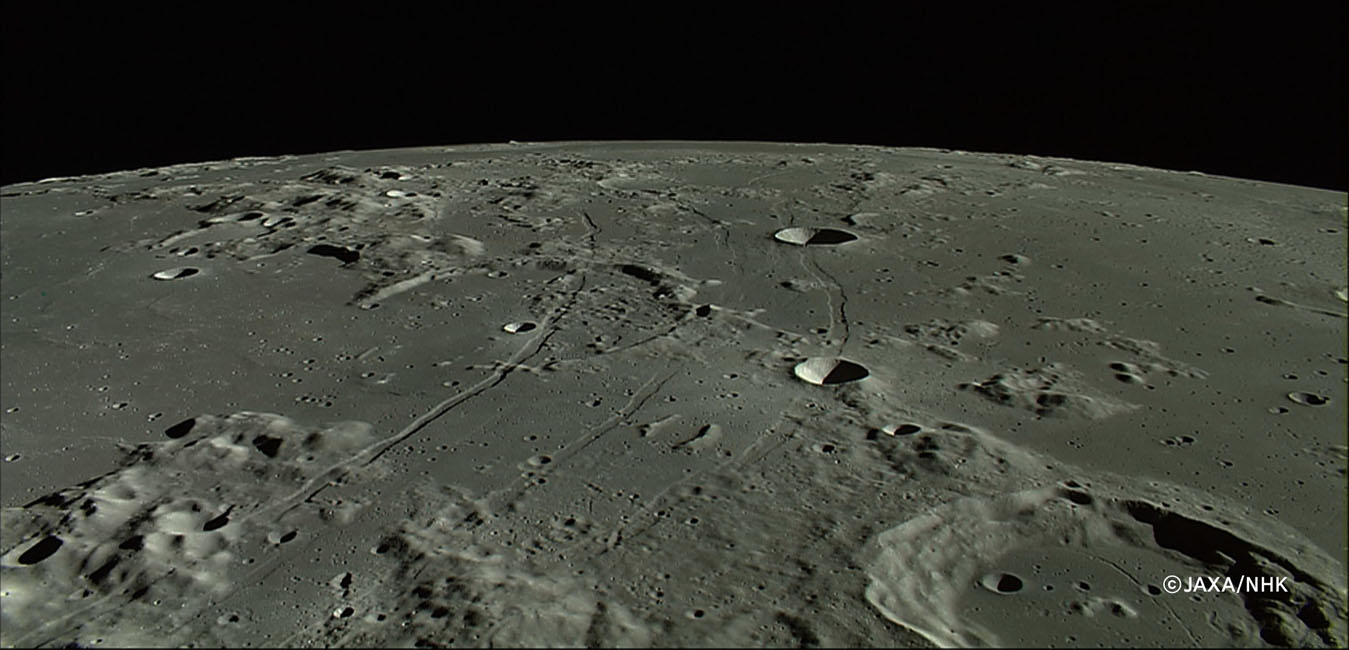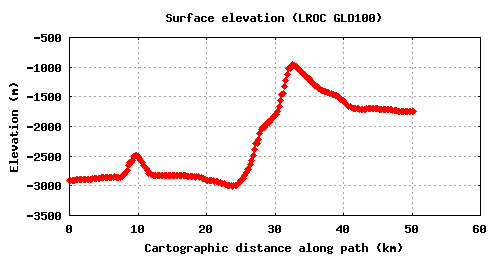February 23, 2013
Railway Tracks

image from Kaguya Archives
This is a classic LPOD from Dec 30, 2008.
Can you imagine being in lunar orbit and seeing scenes like this passing by? A number of new stills from the Kaguya HDTV
are now available including this remarkable view looking north over the Hippalus Rilles. Campanus is the crater with a rille on
its floor at bottom right, and Hippalus is the large crater near the middle whose left side is missing and is embayed by lavas
from Mare Humorum. It is not completely clear why mare-facing crater walls disappear, but this oblique view shows that the
wall becomes progressively lower from its high right side until it disappears. This means that Hippalus formed on sloping ter-
rain and/or it was tilted inward as the basin's center subsided, and then was covered by lavas. The oblique view also suggests
that the floor of Campanus is at a higher level than the mare surface outside it to the right. This isn't certain, but if true means
that the mare and the lava inside the crater were not fed from the same reservoir.
Chuck Wood
Related Links
Rükl plate 53
Yesterday's LPOD: Another Passing of the Apollo Era
Tomorrow's LPOD: Camouflage Moon
COMMENTS?
Register, Log in, and join in the comments.




